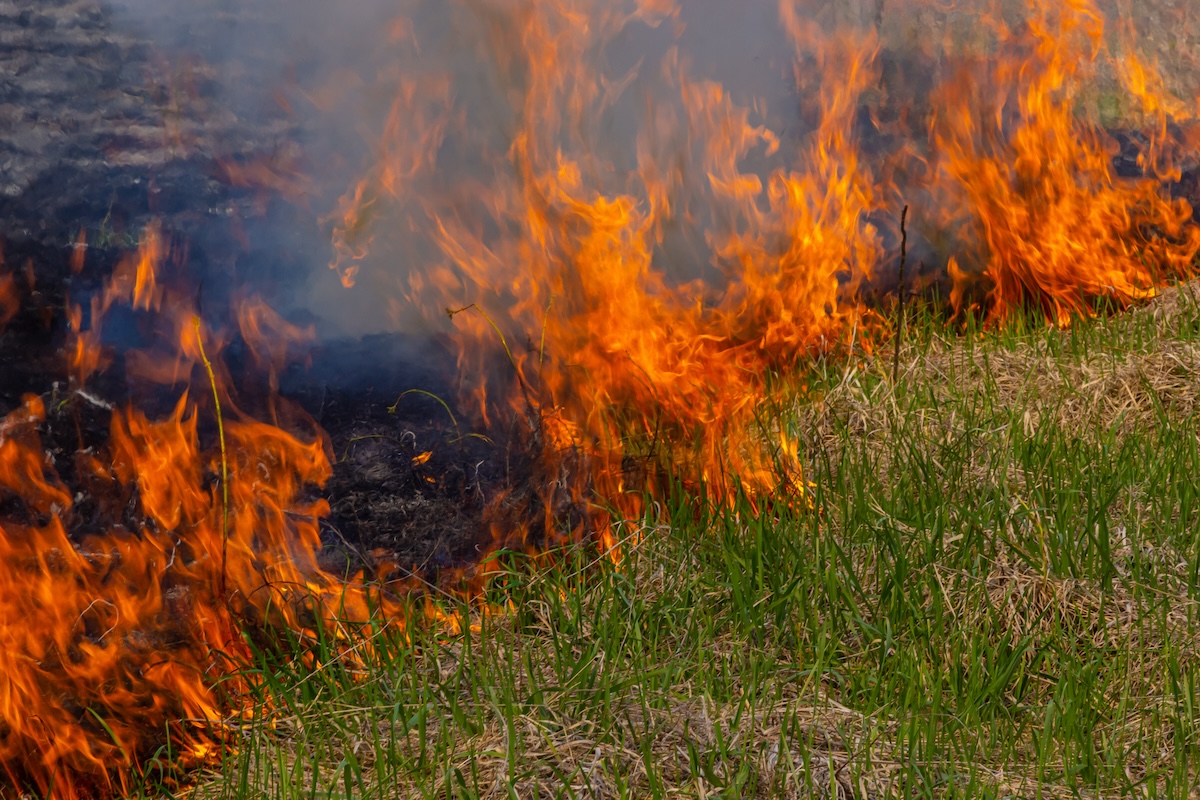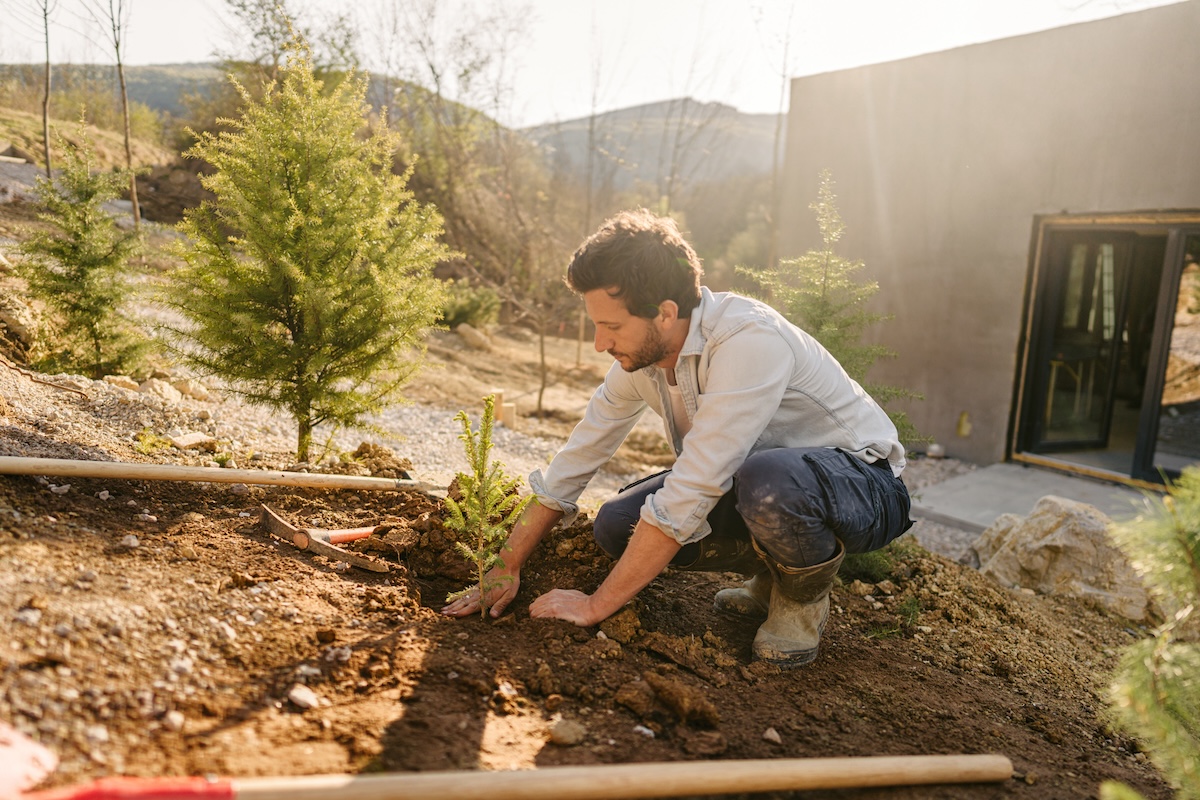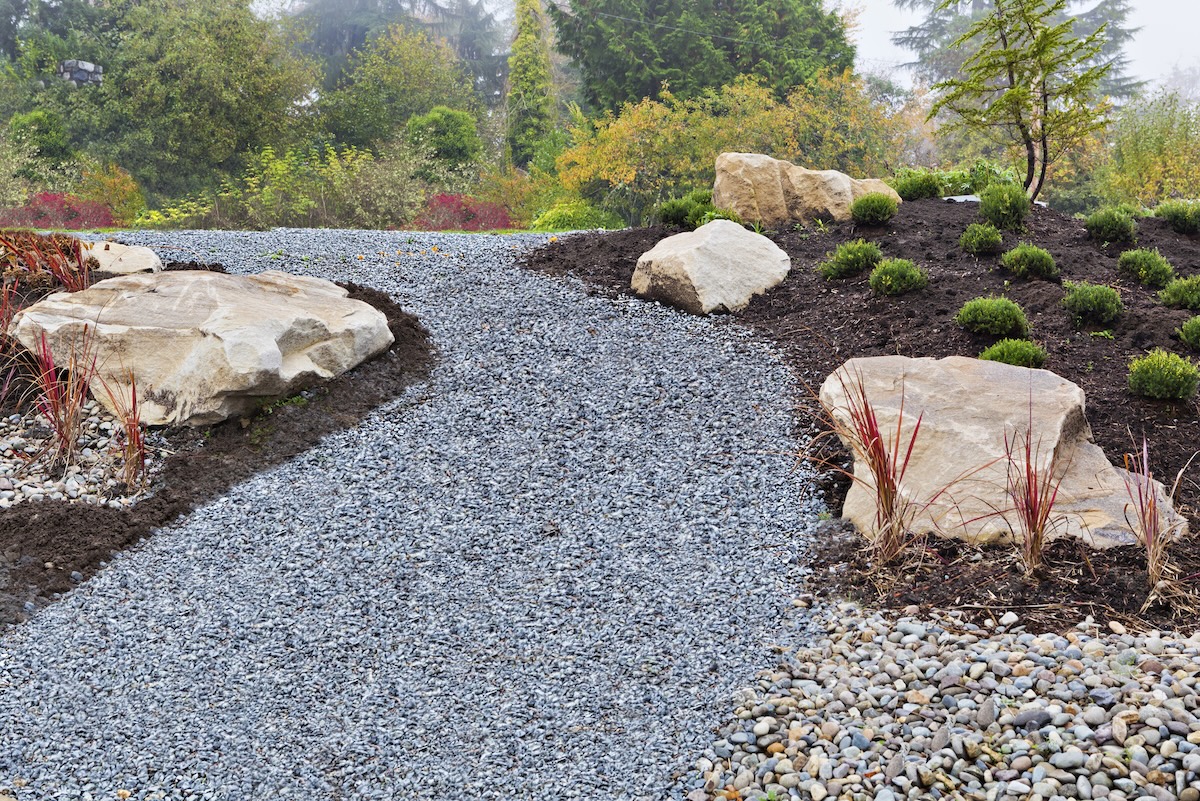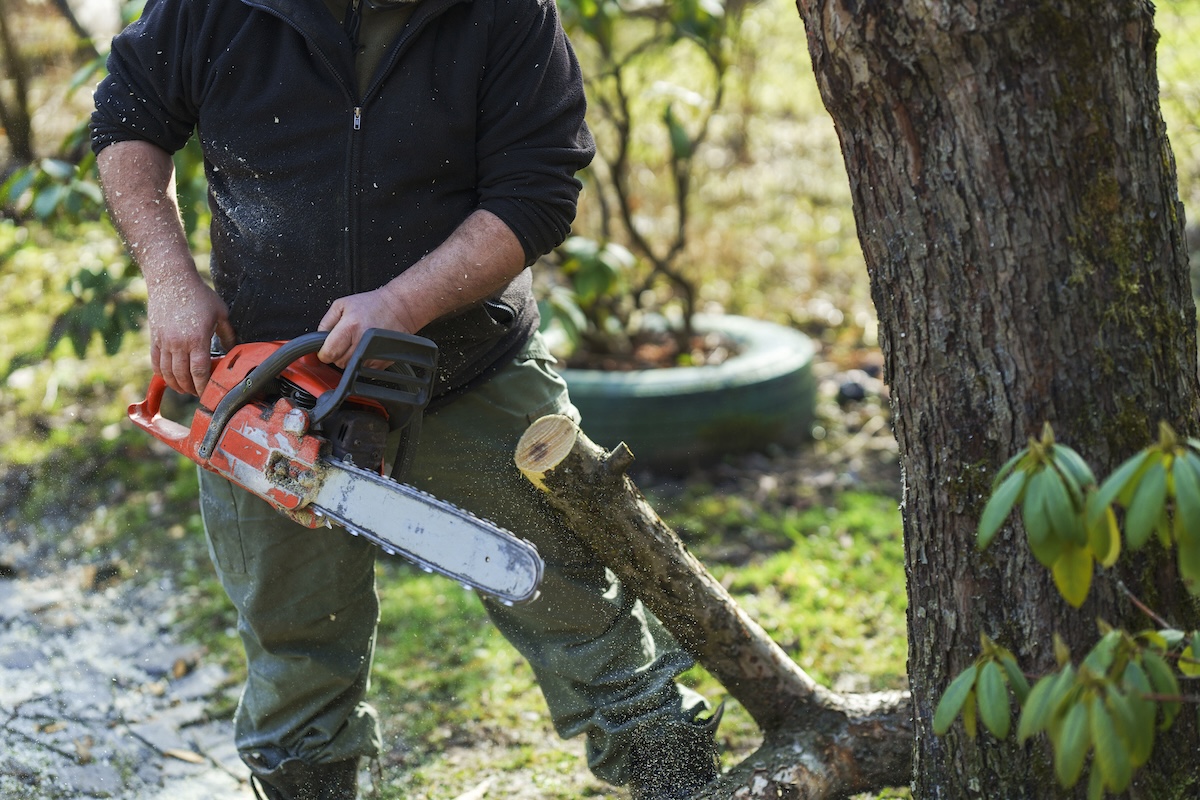

We may earn revenue from the products available on this page and participate in affiliate programs. Learn More ›
Wildfire preparation is an unfortunate reality in the dry Southwest. Yet in a time when areas of the United States not known for drought or fires are seeing wildfire devastation, it’s important for all homeowners to prepare their homes and landscapes so they do not increase the risk of even an urban fire. As of mid-March 2025, more than 9,520 wildfires had burned upward of 269,986 acres in the U.S. in 2025. The National Interagency Fire Center cautioned about significant potential for fires in Texas, New Mexico, Arizona, and several Southeastern states through April. In fact, South Carolina, home to a large early-2025 blaze, now sees an average of 3,000 fires per year.
Making a few potentially tough decisions is critical to having fire-resistant landscaping around your home. ”I would say the biggest mistake a homeowner can make is valuing the tree that’s right next to the home over the home itself,” says George Ducker, public information officer for the New Mexico Forestry Division in Santa Fe, New Mexico. He says many people don’t want to cut down trees because of emotional attachments or benefits like shade. But removing them to create a defensible space, and taking other landscaping steps can help protect your home and property from wildfires.
Understand how fires behave.
Ducker says that although radiant heat and flames are concerns in wildfires, “we’re really talking about defending from embers.” He likens embers to “tiny flaming arrows.” Hot embers can travel up to a mile in a wind-driven fire and remain intense enough to smolder if they land on or near a combustible source against your house. Embers are the source of more structure ignitions than other causes; Ducker cites recent fires in Los Angeles, California, and Lahaina, Hawaii.
Fires need fuel to burn and spread and they spread most quickly with intensity, or the “density of fuel or vegetation,” says Ducker. Ladder fuels help feed fires as well. Ladder fuels are vegetation that help carry a fire from ground level up to taller plants. Create defensible space, maintain or remove some plants, and rethink your fencing materials to help decrease the chance that a fire approaching your home can find combustible sources for embers or gather intensity.

Create defensible space.
The most important fire-resistant landscaping step to take is to create a buffer around your home by keeping vegetation and other combustibles outside the 5 feet adjacent to your home. There are also steps you can take to limit fuel in the extended zone, and in some states, such as California and Texas, building codes are changing to include landscaping close to homes. Defensible space can depend on slopes around your property but typically is defined as:
- Zone 0: Keep this area (the immediate zone) that lies within 5 feet of your home or other structure (including decks or overhangs) free of combustible materials, including plants, overhanging tree canopies, firewood stacks, and debris like fallen leaves. “An ember can fly up to a house, slide down the wall, and just kind of sit there at the bottom,” says Ducker. If there is fuel against your home, it can smolder and start a house fire.
- Zone 1: Also called the intermediate zone, the space 5 to 30 feet from your home should have reduced connectivity of trees, shrubs, and garden beds. A small amount of vegetation is fine if it is properly irrigated and grouped in a way that does not create a fire path or ladder directly to Zone 0 and your home.
- Zone 2: The extended zone lies between 30 and 100 feet of your home. The goal of this zone is to create a fuel break that can interrupt a wildfire path or keep fires on the ground by reducing ladder fuels. Any steps you take even in this outside defensible zone can help protect your home from the effects of drought and climate change.
Place trees and shrubs outside the immediate zone.
When embers fly toward a structure’s walls, any combustible material within 5 feet can put your home at risk. “If it’s just mineral soil or stone, or something that’s not combustible it will just go out,” says Ducker. Replace combustible mulches, grasses, and shrubs with noncombustible mulch (such as gravel) or hardscaping. Keeping that zone free of plants “might feel like a lot but it’s not a ton of space,” says Ducker. But it is significant in defending your home from embers and resulting fires.
If you are planting new trees or designing a new landscape, always consider the mature size of the tree and its canopy. A tree trunk can be well outside the immediate zone, but its branches still can grow to touch the roof. Even some shrubs planted 6 or 7 feet outside the zone can grow and spread enough to reach inside the 5 feet of defense.
“I would say the biggest mistake a homeowner can make is valuing the tree that’s right next to the home over the home itself.”
George Ducker, public information officer for the New Mexico Forestry Division

Group shrubs to prevent fire spread.
Shrubs also can catch fire and serve as a connective fire path or ladder fuel, especially in dense strands. To prevent the spread of flames toward your home, plant individual shrubs or small groups of shrubs so they are separated from one another by double their height. If shrubs normally grow to 2 feet high, ensure 4 feet of space between the grouping and the next shrub or group of shrubs. This helps contain wildfire damage to burning of a few plants or smoke damage only.
Likewise, avoid planting shrubs too close to or under the dripline of a nearby tree within 30 feet of your home. A grass fire could catch a small shrub on fire, and the shrub will serve as ladder fuel for taller vegetation nearby.
Aim for native plant groupings.
If you need another reason to love native plants, remember that they mimic your area’s ecosystem, so as long as you follow other recommendations for plant groupings and placement, they are less likely to spread a fire than a non-native shrub. Native grasses, shrubs, and trees are more likely to adapt to local conditions. “Invasives are a problem in that they grow really fast and can invade the defensible zone,” says Ducker.
An example is juniper shrubs, low-growing non-natives that firefighters often refer to as “little green gas cans.” If possible, replace them, or plant invasives well outside the intermediate zone of 30 feet.
Although any plant can burn under the right conditions, those plants that are invasive or have certain characteristics are most vulnerable to wildfire. Therefore, it is best to avoid plants in the defensible space that have:
- Low moisture content
- A tendency to accumulate lots of dead leaves or thatch
- Volatile resins or oils (usually aromatic)
- Loose and papery bark
- Narrow leaves and long, thin needles

Maintain plants as they mature.
Failing to maintain even native plants can lead to increased risk of fire. Pruning shrubs as recommended helps maintain the distance between them and your home or between shrub groupings. Thin trees and shrubs to prevent continuous paths and lower potential fire intensity within 30 feet of the home and even in woodland borders outside the 30-foot zone of defense.
Ducker advises the same approach to your landscape as the pros use when thinning forests. “The idea is to create a pathway through there so that if things do catch on fire, they can burn in their own centralized spot,” but not travel. Keeping grasses and shrubs properly irrigated and healthy leads to fewer dry fuels.
Likewise, maintaining healthy trees is important to prevent fires and other natural disasters. For fires, the height of tree canopies is less important than their proximity to a structure or one another and the distance from the ground to the lowest branch. Branches that touch or nearly reach the ground can become ladder fuels. “If the grass catches fire, it’s not going to climb up a tree unless those limbs are there,” says Ducker. A good rule of thumb is to trim lower branches so that no part of the tree is within about 8 feet of the ground.
Use noncombustible materials within 5 feet of structures.
When planning defensible zones, be sure to consider replacing manmade additions like fences, arbors, and decks if their materials are combustible. Fencing often is overlooked in fire-resistant landscaping, but according to Ducker, “within the 5-foot zone of the house, it matters a lot.” He says homeowners don’t have to get rid of an entire wood or latilla (coyote) fence, but keep it at least 5 feet from the house. For example, add a metal gate close to the wall or use a noncombustible material like block, steel, or fiber cement within 5 feet before connecting wood slats.
If adding or replacing a deck, look for noncombustible materials such as aluminum, concrete, or a fire-resistant composite. Also, avoid storing combustibles or debris (including firewood) under the deck. If you can’t replace the materials in an existing deck, keep the areas between gaps free of pine needles or other debris and consider enclosing the deck with metal screening.
Clean up debris.
Clean up fallen leaves and other debris regularly, especially during wildfire season. “Pine needles and dust can really build up if you don’t get out there and rake them,” says Ducker. Pine needles left under trees can add to the intensity of any fire that comes through or starts, as can any dead vegetation. Naturally, leaves fall from trees, but keep up with them as you can, and regularly clean up any piles of leaves that gather within 5 feet of a structure. Likewise, make cleaning rain gutters a regular part of your outdoor winter maintenance and fire season preparation.
